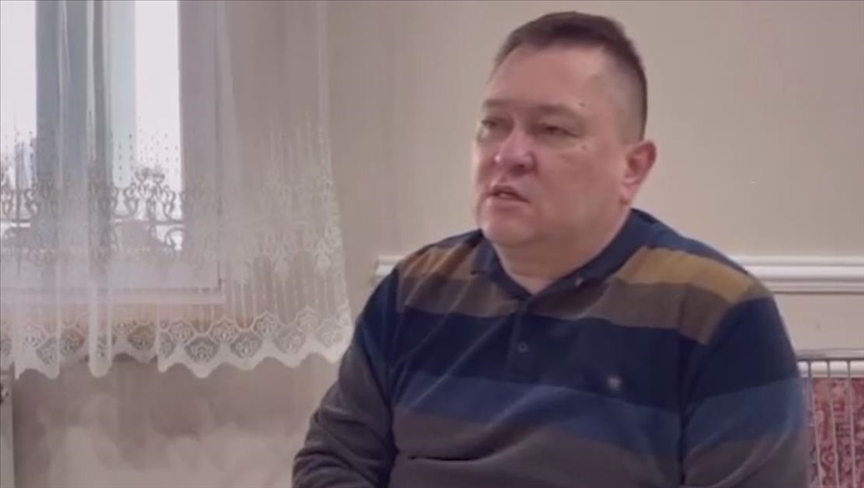
WARSAW
Mizar, a Muslim cemetery, is less than a kilometer outside the small village of Bohoniki in northeastern Poland.
You pass the last houses, turn left along a track lined with trees. Behind a wall, between the trees, tombstones with crescent-shaped monuments begin.
The village is located 9 kilometers (5.6 miles) in a straight line from Poland’s border with Belarus.
The refugee burial area is in the far corner of the cemetery. There are seven graves among the birch trees surrounded by stones.
Since autumn 2021, the cemetery near Bohoniki has become a burial place for refugees who have died crossing the Polish-Belarusian border.
The first such burial, organized by the Dialog Foundation, which runs an open center for foreigners in nearby Bialystok, northeastern Poland, took place in mid-October 2021.
Activists from the Podlaskie Voluntary Humanitarian Aid Service and the Ocalenie Foundation, a group of Chechen refugees living in Bialystok, help organize the funerals.
Maciej Szczesnowicz, the head of the Muslim community, works with them.
"In 2021, the first group was caught. It was six children, three women, and two men,” Szczesnowicz said. “We helped them, gave them food, and took them to the hospital. We tried to help as much as we could.”
“As of today, we are now preparing for three more funerals,” he added.
“It is not important for us a person’s faith or the color of people’s skin. We help everyone. They were tricked by the Lukashenka regime and didn’t know that it was Poland and not Germany over the border. What happened here is simply criminal,” he said.
A Kurdish woman named Avin from Iraq, together with her five children, husband and three other men, were found by activists from Grupa Granica in the forest near Narewka. According to Polish volunteers, the woman was howling in pain. Doctors diagnosed her with hypothermia and acidosis. She was six months pregnant.
The Polish Border Guard separated the group and the critically ill woman was taken to a hospital in Hajnowka, while her husband and children were placed in an open center in Bialystok. The remaining men were pushed back into Belarus.
Avin had a miscarriage in the hospital and died three weeks later. Her body was transported to Iraq. Her son stayed in Bohoniki.
On Dec. 5, 2022, a sixth grave was dug, that of Musa.
According to official statistics, Musa was the 19th casualty along the Polish-Belarusian border. The Helsinki Foundation for Human Rights said about 200 people have gone missing at the border. The real number of migrant deaths remains unknown.
A long history
Present for six centuries on Polish territory, the Tatars are a discreet and little-known Muslim minority.
While Poland has a long history of Catholic-Orthodox and Catholic-Judaic relations, Tatars were the only ones to bring and maintain strong links to Islamic culture.
Their ancestors were from the Golden Horde, a Turko-Mongol Empire of the 14th and 15th centuries who were integrated into the army of the Grand Duchy of Lithuania.
Over the years, they lost their Tatar language from the Kipchak group of the Turkic languages and adopted Belarusian, Lithuanian, or Polish.
They have also adapted their practice of Islam to Polish society. Many eat pork and drink alcohol, for example, or buy a Christmas tree for Christmas.
According to estimates, by 1590-1591, there were about 200,000 Lipka Tatars living in the Polish-Lithuanian Commonwealth, with about 400 mosques serving them. Today there are 10,000-15,000 Lipka Tatars in the former areas of the Polish-Lithuanian Commonwealth.
In Poland, the 2011 census showed 1,916 people declaring Tatar ethnicity.
Of a total of five mosques operating in Poland, two are in the Tatar enclave of eastern Poland.
The mosque in Bohoniki is the smaller of two but it more resembles traditional mosques. Instead of two towers, it has a single tower with an onion-shaped top finished with a crescent.
Anadolu Agency website contains only a portion of the news stories offered to subscribers in the AA News Broadcasting System (HAS), and in summarized form. Please contact us for subscription options.








